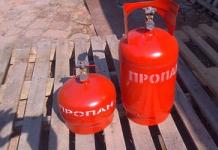Content:
To install heating batteries in an apartment yourself, you need to choose the right type, decide on the type of wiring and connection diagram, and then follow the rules.
Do-it-yourself heating radiator installation - Photo
Defects in the heating system of an apartment can occur for many reasons, which may be impossible to eliminate without replacing the batteries. Then one of the most acceptable solutions would be to install heating radiators yourself. This is not a simple matter and requires strict adherence to technology and rules, as well as accuracy and at least minimal skills in handling simple tools, such as a level, different types of keys, drill, screwdriver, etc. Equally important is the use of quality materials and an understanding of how to install the battery.
The main stages of self-installation of heating batteries
Stage 1. Preparatory. It includes quite a lot of actions, each of which is very important.
You should start with theory, only then will replacing heating radiators in an apartment be successful, and there will be no need to immediately correct the mistakes made.
Radiator wiring methods and their connection diagrams
Methods for laying heating pipes - Photo
You should start by studying the methods of wiring batteries and choosing the most suitable of the existing options:
Monotube or sequential . It is the simplest from the point of view of its design, which is a definite plus for people who decided to do such work for the first time and are not very versed in how to install the battery.
The coolant flows sequentially to all heating devices and returns through the same pipe. It has the following significant disadvantages:
- The final battery with such a scheme most often does not warm up enough;
- there is no possibility of controlling the temperature regime of each radiator;
- To repair or replace the battery, you will have to disconnect the entire riser.
ADVICE. Install a bypass, which will allow you to turn off only those radiators that are equipped with this device.
Two-pipe . This option is somewhat more complicated than the previous one, but it is possible to cope with it with your own hands, you just need to put in maximum effort and diligence.
A parallel connection is used here, when the coolant is supplied to each radiator and returned, already cooled, through another, called return.
Among the advantages of this option: the ability to regulate the degree of heating of the battery using thermostats, the room warms up more evenly, and repairs are much easier, since you can turn off any of the devices separately without involving the entire system in the process.
Collector . It is not used for apartments and is also the most difficult to implement. Therefore, we will not dwell on it in detail.
battery connection diagrams in the apartment - Photo
Of no less importance is connection diagram. They are selected taking into account the structural features of the apartment, the existing heating system and some other factors. Let's look at the features of each option:
- The most common connection type is one-sided lateral . It has good heat transfer, but if multi-section radiators are used in the apartment, then insufficient heating of those sections that are located on the edge is possible. Correcting this drawback is not at all difficult - you need to install an extension cord for the water flow.
- Lower. This method is advisable if the heating pipes pass under the baseboard or are built into the floor. The hot water supply and return pipes are located at the very bottom of the battery and are directed vertically downwards, which does not interfere with the aesthetic perception of the room. However, heat loss can reach very significant values - up to 15%.
- Diagonal . This option is preferable if radiators have 12 or more sections. Here, the pipe with the hot medium is connected to the upper pipe on one side of the battery, and the return pipe is connected to the lower pipe, located on its reverse side. Heat losses do not exceed 5%. However, this figure will double if the connection points of the return and main pipes are swapped.
Taking into account the characteristics of your home, as well as your preferences, you can choose the most suitable type of connection. In case of serious doubts, you can seek advice from professionals.
Selection of heating devices (radiators)
When installing heating radiators with your own hands, it is important to choose correctly which of the many available on the market today are suitable for specific conditions. Let's look at the most interesting and popular types:
Cast iron. The advantages of such familiar heating devices include: durability, good heat transfer, unpretentiousness. However, in order to ensure good heating of the room, such batteries must have a fairly large number of sections, which are not so easy to assemble.
There are also features of fixing such batteries in houses built from different materials. For example, if the walls are made of wood, in addition to supporting fasteners, you will need a support stand.
Aluminum . They fit into interiors of different styles and have good heat dissipation and low weight. Perfect for installing heating radiators with your own hands.
Steel batteries . These corrosion-resistant heating devices are characterized by good heat transfer and a high level of performance characteristics. Other advantages include low price and ease of installation.
Bimetallic . Such batteries look very attractive, have high heat dissipation, are light in weight, and do not require special maintenance.
Aluminum heating radiator - Photo
Choosing the most suitable type of radiators you need calculate the required number of sections. It is better to find out all the necessary values from the specialists of the store where you plan to purchase these devices.
ADVICE. In accordance with the good, but old rules, one section is enough for high-quality heating of 2 m2, if the ceiling height does not exceed 2.7 m. This calculation does not reflect the technical characteristics of modern types of radiators, as well as specific conditions that have changed significantly in recent years. Therefore, such a calculation can only be taken as a very rough guide.
Stage 2. Preparation of documents, purchasing the necessary parts and materials.
Heating in an apartment is part of a single centralized system and in order to drain the coolant it will be necessary to turn off the entire house. Coordination of such actions with government agencies is prerequisite. If you try to install heating radiators with your own hands without permission, you may be subject to administrative liability in the form of a fine.
ADVICE. It is advisable to prepare permits in advance, since making a decision on your application takes some time.
To install batteries in an apartment correctly and quickly enough you will need:
- Brackets, which are selected according to the type of materials of the walls of the apartment. Their number is calculated based on the rule: at least one bracket for every meter of battery area.
- Shut-off valves. When installing heating radiators with your own hands, without having experience in performing such work, preference should be given to radiator-type products.
- Sgony. They are used to connect batteries to a heating system without welding or wiring. They must match the size of the battery and the thread of the pipes used.
- Adapters, couplings, Mayevsky cranes, tow, sealing tape etc.
Stage 3. Selecting a location and rules for installing batteries.
Do-it-yourself battery installation in an apartment - Photo
After the old batteries have been removed, you can proceed to marking the mounts for the new ones. It is very important here to know how to install the battery so that the indoor microclimate is pleasant.
There is nothing complicated: radiators are installed in places where there is a significant temperature difference - near doors and windows.
There are a number of rules on how to properly install batteries that should be strictly followed:
The slope of the liner elements should be at least 0.005, but it is better if this figure is twice as large. It is most advisable to measure it along the length of the pipes, based on the calculation that each meter should be tilted 0.5 cm in the direction of coolant circulation.
. The distances from the battery to other surfaces should be:
o to the floor - 6-10 cm;
o to the window sill - 5-10 cm;
o to the wall - 3-5 cm.
. Strict adherence to horizontal and vertical when installing a heating device, not “by eye”, but using a level.
ADVICE. Install a heat-reflecting shield behind the radiator or cover the wall with similar material. This will improve battery performance and improve the microclimate without extra costs.
- The centers of the window opening and the battery must coincide. A slight displacement is possible - no more than 2 cm, which is not visually noticeable.
- Radiators in the same room should be placed at the same level, which is technologically advanced and looks aesthetically attractive.
Stage 4. Final. Installation of batteries and connection to the riser.
Before you begin installing radiators, you need to install brackets for what:
- Mark their placement points, which are selected taking into account the installation rules;
- Holes are drilled in the wall, where dowels are installed and fasteners are screwed in, which you purchase or make yourself.
Connecting battery sections requires special tools and some skill, so it is wiser to order this work to be done in a store. You can easily assemble the installation kit yourself.
To connect the battery to the heating system, a threaded connection is used, and then the joints are sealed using tow, and welding is also used.
Installation of aluminum or bimetallic heating radiators video
Other options are also possible if metal-plastic or propylene pipes are installed when creating a heating system.
Now you have an idea of how to install a heating battery, and if you wish, you can completely handle this work yourself.
In the old days, installing heating radiators yourself was problematic due to welding work, which was an integral part of the installation. Modern materials make it possible to do without special devices, which makes it possible to install heating radiators in the house with your own hands.
To carry out similar activities in an apartment, it is recommended to involve plumbers from a service company, since you will need to completely disconnect the system from the main line and drain the water. Not everyone knows how to do this correctly, and a poor-quality connection can result in a flood of hot water.
If we are talking about replacing old structures with new ones, then the issue of location disappears by itself. When planning a circuit design, it is necessary to take into account important factors according to which the batteries must provide reliable thermal protection. No matter how high-quality modern double-glazed windows are, they are still sources of cold air flow.
The diagonal method involves connecting the supply pipe to the top of the heating device, and the return pipe from the bottom, but located on the other side;
The bottom connection is made at the bottom of the battery on opposite sides;
The lateral or one-sided method is more often used with a vertical wiring diagram with a connection to the right or left side of the radiator.
1. Preparatory work includes dismantling old structures if necessary. The water must first be completely drained from the disconnected system. You will need to install special fasteners for batteries on the wall or check the strength and correct installation of existing hooks. You should also examine the wall surface for integrity.
Often cracks and gaps form under the window sill over time. They must be sealed with cement mortar, and foil insulation must be fixed to the dry surface. Other wall finishing options include: plaster with a special insulating compound, plasterboard sheathing with an insulating layer, etc.
To increase heat transfer and save thermal resources, it is worth fixing a sheet of foil insulation to the wall on the back side of the radiator. Penny costs will allow you to save up to 10% on heating.
High-quality heating is the key to a favorable climate in the house and the absence of cold weather even in the most severe frosts. Therefore, if you have an old and ineffective radiator in your apartment or cottage, then it is worth replacing it. At first glance, this seems to be a very complex job, accessible only to specialized specialists with significant experience. But with the right attitude and the availability of some tools, installing heating radiators with your own hands does not pose a serious problem.
In addition to the characteristics of the radiator itself and the correctness of its connection, one of the most important factors affecting the efficiency of the heating system is the choice of the right location for the product. True, in most cases it is predetermined in advance - the new battery will most likely stand in place of the old cast-iron one, which has been there since the building was built. But still, here are some recommendations for proper placement of the radiator.
How to install a radiator yourself
Firstly, it is advisable to place the battery under a window. The fact is that it is a “bridge” through which the cold from the street enters the apartment or cottage. The presence of a radiator under the window forms a kind of “thermal curtain” that interferes with the process described above. In this case, the battery should be placed strictly in the middle of the window, and, preferably, occupy up to 70-80% of its width.
Secondly, there should be at least 80-120 mm from the floor to the radiator. If it is less, it will be inconvenient to clean under the battery; a huge amount of dust and debris will accumulate there. And if the radiator is located higher, a certain amount of cold air will collect under it, which requires heating and, as a result, worsens the operation of the heating system. In addition, too short a distance to the windowsill negatively affects the battery efficiency.
Thirdly, a distance of 2.5-3 cm is allowed between the back of the radiator and the wall. If it is smaller, the processes of convection and movement of warm air flows are disrupted, and, as a result, the battery works less efficiently and wastes some of the heat.
All of the above principles for placing a heating battery are presented in the diagram above

Table. Standard connection diagrams for heating batteries.
Liquid fuel boilers - review of models and selection of the best For comfortable living in a private house in a temperate or northern climate, it is necessary to equip.
Which boiler is best for a private home? A heating boiler will provide the home with heat without the need to connect to central communications, thanks to which.
Leningradka heating system Leningradka, that is, the most economical of the existing heating systems, has appeared for several decades.
Water heating convectors: selection, principle of operation, installation Water heating convectors are increasingly being installed in modern houses and apartments. High heating efficiency.
Home » Heating » DIY installation and connection of heating radiators
The installation or reconstruction of a heating system involves the installation or replacement of heating devices. The good news is that, if you wish, you can handle this yourself without the involvement of specialists. How heating radiators should be installed, where and how to place them, what is needed to carry out the work - all this is in the article.
It is possible to install heating radiators with your own hands
If you install radiators with a bottom connection, you have no choice. Each manufacturer strictly binds the supply and return, and its recommendations must be strictly followed, since otherwise you simply will not get heat. There are more options with a side connection (more about them is written here).
One-way connection is most often used in apartments. It can be double-pipe or single-pipe (the most common option). Metal pipes are still used in apartments, so we’ll consider the option of tying the radiator with steel pipes on pipes. In addition to pipes of a suitable diameter, two ball valves, two tees and two bends are needed - parts with external threads at both ends.
Lateral connection with bypass (one-pipe system)
All this is connected as shown in the photo. With a one-pipe system, a bypass is required - it allows you to turn off the radiator without stopping or draining the system. You cannot put the tap on the bypass - you will block the flow of coolant through the riser, which is unlikely to make your neighbors happy and, most likely, you will be fined.
Hooks for cast iron batteries are thicker. This is a fastener for aluminum and bimetallic
When installing hooks under heating radiators, keep in mind that the main load falls on the upper fasteners. The lower one serves only to fix it in a given position relative to the wall and is installed 1-1.5 cm lower than the lower collector. Otherwise, you simply will not be able to hang the radiator.
One type of brackets
When installing the brackets, they are applied to the wall in the place where they will be mounted. To do this, first attach the battery to the installation location, see where the bracket “fits,” and mark the location on the wall. After placing the battery, you can attach the bracket to the wall and mark the location of the fasteners on it. In these places, holes are drilled, dowels are inserted, and the bracket is screwed. Having installed all the fasteners, hang the heating device on them.
Floor fixing
Not all walls can support even lightweight aluminum batteries. If the walls are made of lightweight concrete or covered with plasterboard, floor installation is required. Some types of cast iron and steel radiators come directly with legs, but not everyone is satisfied with their appearance or characteristics.
Legs for installing aluminum and bimetallic radiators on the floor
Floor installation of heating radiators made of aluminum and bimetallic is possible. There are special brackets for them. They are attached to the floor, then the heating device is installed, and the lower collector is secured with an arc to the installed legs. Similar legs are available with adjustable height, and there are also fixed ones. The method of fastening to the floor is standard - with nails or dowels, depending on the material.

The installation of each type of battery has its own nuances.
Cast iron
The difference from the standard scheme is that for batteries of this type, sections are initially formed using a radiator key.
The nipples are impregnated with drying oil and fixed manually onto 2 threads. In this case, a gasket must be used. Then the radiator keys are inserted into the nipple holes and tightened.
Important! The sections must be assembled with an assistant, since simultaneous rotation of the nipples can lead to misalignment.
After crimping the battery, a layer of primer is applied to it and painted.
Aluminum

It goes according to the standard scheme of one of three connection options.
The only caveat is that aluminum batteries are fixed both on the wall and on the floor. For the latter option, special clamping rings on the legs are used.
By adjusting the distances of the radiator from the wall, floor and window sill, you can increase or decrease the level of heat transfer from the battery.
When installing aluminum heating sources, follow the included instructions. If the recommendations indicate the use of coolant, then you should use it exclusively.
Mounting the screen in front of the radiator will increase the degree of efficiency.
Such batteries are suitable for installation in private houses with autonomous heating.
Steel
An important point in connection is checking that the battery is horizontal. Any deviation will reduce work efficiency.
A variety of heating systems provide a comfortable air temperature inside residential premises. The basis of the vast majority of heating concepts are special heat transfer devices, commonly called batteries. You can install them yourself if you know the nuances of the work.
We have collected and systematized for you all the information about connection options and methods. Taking into account our recommendations, installing heating radiators with your own hands will be carried out without the slightest difficulty. All readers of the article we presented will be able to cope with it without any problems.
A detailed description of connection options and technologies is supplemented with visual diagrams, photo collections, and video instructions.
An initial knowledge of the modes and operating conditions of heating devices will help you understand what battery designs are needed.
Below is a summary of information about the parameters of heating systems that are important when choosing batteries:
1. Internal pressure. The value required for the correct selection of a device that can withstand the pressure in the heating circuit:
- Private house (autonomous) = 1.5-2 atm.
- Private house (centralized) = 2-4 atm.
- 5-storey building (centralized and autonomous) = 2-4 atm.
- 9-storey building (centralized and autonomous) = 5-7 atm.
- House over 9 floors (autonomous) = 5-7 atm.
- House over 9 floors (centralized) = 7-10 atm.
If the technical capabilities of the battery are lower, there is a possibility of depressurization of the device with other negative consequences.
2. Permissible heating temperature. A characteristic indicating the upper temperature limit, above which the battery may fail:
- Autonomous = up to 90⁰С.
- Centralized with plastic wiring = up to 90⁰С.
- Centralized with steel wiring = up to 95⁰С.
Operation in violation of the temperature regime leads to melting of the seals, deformation and loss of tightness of the device.
3. Degree of coolant contamination. A parameter that is mainly of interest to water supply owners:
- Autonomous private house = high, medium, low when installing filters.
- Autonomous multi-storey building = high, medium, low when installing a filter system.
- Centralized = low, in rare cases medium.
Water supplied by centralized networks to municipal heating systems undergoes comprehensive purification. The content of sand and clay suspension in water extracted from private wells, wells, and open sources may exceed the permissible limit.
Traditional battery installation locations
For further selection of battery designs, it is necessary to determine the points. They are placed in places of greatest penetration of cold. This is done to minimize the impact of drafts on the indoor microclimate. They also focus on ensuring availability for periodic maintenance.
Batteries mounted at the bottom create a thermal curtain in rooms with panoramic windows, for example, on verandas
Battery Location Areas:
- Window niches. The most common location for heating appliances.
- Extended spaces between windows. One of the popular additional options.
- Corners and “blind” walls of corner rooms. It is used to enhance heating of rooms with increased heat loss due to intense exposure to winds.
- Bathrooms, storage rooms, bathrooms, one or two sides of which are combined with a solid load-bearing wall.
- Unheated entrances, hallways of private houses.
- Apartment corridors of the first floors of high-rise buildings.
Modern designs of heating devices fit under a balcony door or entrance to a loggia.
An example of the location of heating radiators in one house:
Image gallery
The most popular and rational location of the heating radiator is under the window, behind a protective decorative screen
If the space under the window is occupied, you can hang the radiator from an adjacent wall in close proximity to the window
An ordinary heating radiator hardly fits into the bedroom interior. The way out is a false cabinet or cabinet
In the bathroom, the heating device performs the additional function of a heated towel rail, so it often differs in design
Traditional arrangement of batteries in the living room
How to place a radiator in a children's room
Installing the battery in a cabinet
Installing a radiator-dryer in the bathroom
Design specifics of heating devices
Structurally, batteries are divided into groups: radiators, convectors and registers.
Review of popular heating devices
Radiator is the most common type. This is a heating device consisting of vertical separate compartments. In classic collapsible products, sections are independent working elements. They are joined in the required quantity using threaded internal connections. This assembly scheme gives the batteries versatility.
Before installing or possibly completing a heating radiator, it is necessary to perform a calculation in accordance with the required thermal power. According to calculations, the number of sections of prefabricated batteries is selected. The horizontal cavities of radiators obtained by connecting sections are called collectors. Top and bottom.
Modern technologies have mastered the production of less versatile, but more reliable non-separable radiators using welding and solid casting methods. They do not have joints and seals characteristic of collapsible radiators. Design - for every taste.
A convector is a one-piece heating device made of a tubular or cavity heat exchanger with rows of heat-removing fins. Convectors are available in the following versions:
- Wall-mounted.
- Floor (duct)
- Skirting.
A register is a non-separable heating device made of straight, smooth horizontal pipes, arranged and combined in a certain way.
Details about the types of radiators
Radiators differ in the material used for their manufacture.

Within one variety there may be different design solutions, sometimes unexpectedly original.
The heating appliance market can offer:
- Radiators are cast iron. The ancestors of the batteries of this group. Relatively inexpensive. Can withstand each operating mode. They serve up to 50 years. The main disadvantage is that they are heavy, which, however, helps retain heat for a long time when the heating is turned off.
- Steel radiators. Such batteries are structures made of steel pipes. They work in any conditions, but are less durable than their cast iron counterparts. They have low heat transfer.
- Aluminum radiators. Made from lightweight, aesthetic material, these batteries dissipate heat better than anyone else. They are resistant to all operating temperatures, but are afraid of water hammer. Aluminum is very demanding on the quality of the coolant.
- Bimetallic radiators. Steel insides clad in aluminum – that says it all. The main characteristics are the same as those of steel, heat transfer is almost like that of aluminum. The price is steep.
- Copper radiators. These are “eternal” heat emitters for any room. Their only and most significant disadvantage is their extremely high cost.
- Radiators are plastic. Innovation in the family of radiators. So far they are suitable only for autonomous heating systems of private houses with a coolant heated to no more than 80⁰C.
The most sensitive to operating conditions. These radiators reliably serve only 15 years. Their use is only possible in autonomous heating systems.
Externally, popular models of radiators made of different materials are similar:
Image gallery
A traditional type of radiator that served our grandparents faithfully. Old models have been replaced by stylized new ones
Steel radiators are characterized by a long service life and resistance to coolant characteristics
Low weight is a really important advantage of aluminum, especially if the heating device must be installed on a relatively weak support
Heating radiator made of cast iron
Heating device made of steel
Lightweight aluminum battery
Heating radiator made of copper
Characteristics of the convector variety
Convectors are significantly inferior in heat transfer to radiators, but in some cases they successfully complement or replace them:
1. Wall convectors. Batteries in this design are usually made of steel, so they are cheap. They are not resistant to water hammer, and their use in centralized heating systems is undesirable.

Convectors designed as panels look like closed radiators, are very attractive, and fit perfectly into any interior design.
But made in the form of pipes bristling with plates, such batteries are only suitable for installation in utility rooms.
2. Floor convectors (duct). An excellent solution for creating a thermal curtain at the door of a balcony or loggia. Made from durable, corrosion-resistant materials, they are unpretentious to operating requirements.
3. Skirting convectors. Capable of operating in all conditions and modes, these batteries are ideal for creating a microclimate where all other heaters would look cumbersome.
The baseboard type is appropriate in bathrooms and storage rooms adjacent to cold street walls and unheated entrances.
Brief description of heating registers
Once upon a time, batteries of this group were made handicraft using conventional welding. Registers can be used in any heating systems, but due to their unsightly appearance they are used mainly in auxiliary rooms: garages, storerooms, basements. Sometimes they can be seen in the entrances of old high-rise buildings.
Modern manufacturers have their eye on this group of heating devices.

Shiny chromed metal registers can decorate the design renovation of any living space
Calculation of thermal power of batteries
The stage of preliminary selection of batteries is completed, you can proceed to calculating the thermal power required from them. The calculations are based on a relative power of 100 W for heating 1 m² of standard room.
The full formula includes many correction factors and looks like this:
Q = (100 x S) x R x K x U x T x H x W x G x X x Y x Z,
S= area of the heated room, where:
R– additional parameter for rooms oriented to the east or north = 1.1;
K– correction for the presence of external walls in the room:
one = 1.0;
two = 1.2;
three = 1.3;
four = 1.4;
U– insulation coefficient of street walls:
low = 1.27 (without insulation);
average = 1.0 (plaster, surface thermal insulation);
high = 0.85 (insulation performed according to special calculations);
T– weather indicator of the period of lowest temperatures in ⁰С:
up to -10 = 0.7;
up to -15 = 0.9;
up to -20 = 1.0;
up to -25 = 1.1;
up to -35 = 1.3;
below -35 = 1.5;
H– ceiling height index in meters:
up to 2.7 = 1.0;
up to 3 = 1.05;
up to 3.5 = 1.1;
up to 4 = 1.15;
W– characteristics of the room located on the floor above:
unheated and uninsulated = 1.0 (cold attic);
unheated but insulated = 0.9 (attic with insulated roof);
heated = 0.8.
G– degree of window quality:
serial wooden frames = 1.27;
frames with single glazing = 1.0;
frames with double glazing = 0.85;
X– ratio of the area of window openings to the area of the room:
up to 0.1 = 0.8;
up to 0.2 = 0.9;
up to 0.3 = 1.0;
up to 0.4 = 1.1;
up to 0.5 = 1.2;
Y– battery surface openness value:
fully open = 0.9;
covered with window sill = 1.0;
obscured by a horizontal projection of the wall = 1.07;
covered with a window sill and front casing = 1.12;
blocked on all sides = 1.2;
Z– battery connection efficiency (1.0 ÷ 1.13; for more details, see the section below).
The calculated value must be multiplied by a conditional coefficient of 1.15. It will provide some heat reserve to enable more precise adjustment of devices to operate in low-temperature mode.
Effective ways to connect
Before continuing to study how to correctly select, install and connect heating radiators and other heating devices, it is necessary to consider two main types of pipe layout of existing heating systems. They differ in the principles of organizing the supply of coolant to the batteries and its return to the system.
In practice, the pipe that supplies heat is called the “supply”. The pipe that returns the coolant is “return”. The vertical distribution pipe (supply or return) is called a “riser”.

In single-pipe heating systems, the coolant is supplied unevenly. It will arrive at devices far from the boiler after it has cooled down somewhat. Therefore, single-pipe circuits have limitations on their length
Traditional wiring options:
- Single-pipe. The wiring is arranged in such a way that one pipe plays the role of supply and return. The batteries “crash” into it sequentially. The coolant bypasses the heating devices in the order in which they are connected.
- Two-pipe. In a two-pipe distribution, one pipe is the supply, the other is the return. With this option, the battery heating devices are connected simultaneously to both pipes, parallel to each other. The coolant circulates through all batteries simultaneously.
The “Z” coefficient in the formula for calculating thermal power depends on the options for connecting heating devices.
The most widely used connection methods in practice:
Method No. 1. Diagonally. Z = 1.0.
This connection procedure is the most effective, especially if the heating system is not working well. The coolant enters the battery from the top on one side, passes through the entire internal cavity and exits from the bottom on the other side.
Thermal energy is transferred to the entire surface of the heating device. For radiators with a length of more than 12 sections, this method is highly recommended.
Method number 2. From the side (top – entrance, bottom – exit). Z = 1.03.
Until recently, this was the most common method for connecting batteries. It is convenient for installation due to the short connection length.
For radiators up to 12 sections, the heat transfer is almost equal to the diagonal connection method. But this is in well-functioning heating systems. If the systems are operating sluggishly, the hot coolant will not reach the final radiator compartments.
Method number 3. Bottom on both sides. Z = 1.13.
Despite the least efficiency, this connection method quickly took root in new construction, thanks to plastic pipes. Heating system wiring is installed in the floor and does not overshadow the design of the premises. With properly configured heating systems, all parts of the batteries receive uniform heating.
The final stage of battery selection
The final stage of selection is based on the results obtained of the power required from the heating devices.
Ready-made one-piece designs of radiators, convectors or registers are selected at the time of purchase.
From the factory data sheets of the products, data on their thermal power is visible. When purchasing batteries, the specifics of the installation location (for example, the possible dimensions of the device) are taken into account.
Non-separable radiators and registers with individual parameters are manufactured by specialized organizations to order. Collapsible radiators should be considered based on the number of sections, based on their total thermal power.
Approximate individual powers of standard 500 mm sections made of different materials (Watt with a coolant of 70⁰C):
Cast iron = 160;
Steel tubular = 85;
Aluminum = 200;
Bimetallic = 180.
The power of collapsible radiators is regulated by attaching additional or disconnecting unnecessary sections.
When choosing batteries of different designs for one room, it is more correct to start their selection with non-separable products.
It is also proposed to install a heat-reflecting screen between the battery and the outer wall. To make it, you can pay attention to modern heat-reflecting materials isospan, penofol, aluf.

An air vent is a small device built into the part of the battery where air can accumulate. For collapsible radiators, this is a threaded hole in the end of the upper manifold opposite the supply pipe inlet
When fixing heating devices in place, their deviation from the horizontal level is not allowed. It is allowed to raise the side with the air vent up to 1 cm for better collection and release of air.
When connecting heating devices to systems with risers, the centers of the battery inlets should not be higher than the centers of the outlets from the supply pipes. If, when connecting to risers, it is planned to equip heating units with taps or devices for temperature regulation, in single-pipe heating systems it is additionally necessary if they are absent.
Bypass is a jumper parallel to the battery connection. This element allows you to organize control of the operation of the heating device. It is a piece of pipe connecting the inlet and outlet of the battery. The diameter of the jumper pipe should be one size smaller than that of the riser pipe. In two-pipe heating systems, the installation of bypasses is not required.
Due to the vastly different expansion coefficients of materials, it is not recommended to connect batteries using plastic hoses to steel pipe wiring. Conversely, the main plastic wiring excludes the transition to steel connection parts.
Until the installation is completed, it is advisable not to remove the packaging shell from steel, aluminum and bimetallic batteries in order to avoid their mechanical damage.
Preparing dismountable radiators for installation
If the purchased collapsible batteries do not have the calculated parameters, they should be modified by disconnecting excess sections or adding to the desired quantity. The radiator compartments are tightened together using plumbing nipples through round sealing gaskets.
The nipple is a short, thick-walled tube with an external thread. Half - right, half - left. Inside the tube along its entire length there are two opposite longitudinal technological protrusions.

The radiator wrench can be replaced with a chisel of a suitable length, with a tip width sufficient to confidently engage the nipple protrusions. The role of the wrench will be played by an adjustable pipe wrench.
The design of the collapsible radiator has a left-hand thread.
To correctly perceive the direction of rotation, it is recommended to unscrew or tighten the nipples by inserting a key or chisel into the holes of the sections where the threads are right-handed. To avoid distortions of parts, the holes need to be alternated after a revolution or two of the tool.
Securing dismountable radiators in place
Collapsible radiators are hung on special brackets. The most reliable are arc-shaped hooks mounted in the main walls of premises. In this case, the distances must be ensured:
From the floor = 6-12 cm, sufficient for cleaning and heating the bottom of the wall,
at least 7 cm to the window sill to ensure effective convection,
from the heat-reflecting screen or from the wall = 3-5 cm.
The brackets are mounted in such a way as to fit into the intersection space of the radiators. According to the unwritten rule, when hanging batteries, the end caps with right-hand threads should be on the right, and those with left-hand threads on the left.
Markings for hooks are carried out in the following order:
- Draw a vertical line of the axial center of the radiator (when installing the battery under a window, most often this is its center) with a length no less than the height of the battery.
- The distance between the spaces of the first-second section of the radiator and the last-penultimate one is measured.
- A horizontal line is drawn corresponding to the center of the upper radiator manifold, with a length no less than the measured distance (taking into account the general tips outlined above).
- The distance itself is plotted left and right on a drawn horizontal line symmetrically relative to the line of the axial center. The resulting two points are the places for the upper hooks. They will support the weight of the structure.
- From the point of intersection of the horizontal lines and the axial center, a distance equal to the center-to-center distance of the collectors (standardly 500 mm) is laid down vertically.
- A horizontal line is drawn through the intended point, corresponding to the center of the lower radiator manifold.
- The distance measured in point 2 is plotted left and right on a drawn horizontal line symmetrically relative to the axial center line. The resulting two points are the places for the lower hooks. They will ensure the immobility of the structure.
- At the designated points, holes are drilled for dowels, into which threaded brackets are screwed or hooks with smooth rods are hammered.
The drilling process is described for cast iron and bimetallic heating devices with no more than 10 sections, and aluminum radiators with no more than 12 sections. For larger batteries, a hook should be added in the center area at the top and bottom.
Fastening in place non-demountable types
Brackets for installing non-separable radiators are usually included in the product kit. The sequence of marking the mounting points of the brackets for hanging these batteries is described in the attached installation diagram. The procedure is similar to that described for dismountable radiators.
The choice of brackets for securing convectors is varied. It is determined by the location of the heating device.

The convectors are held on the walls with brackets, fixed to the floor, and suspended from below to the window sills
By analogy with collapsible radiators, they are hung on arched hooks that are immovably embedded in the walls. The total number of brackets is standard four (two hold the upper pipe, two hold the lower pipe). For light registers, it is possible to use holders for pipes of the appropriate diameter with clamps.
Connecting batteries to heating systems
It is advisable to use a torque tool for connection work. The required tightening forces are specified in the passports of the purchased heating devices. To create a tight seal for threaded connections, you will need fluoroplastic sealing material, briefly called “FUM tape,” and plumbing flax.
If the connections of the batteries with the wiring of the heating system are made with plastic liners, you will additionally need:
- Welding machine for polypropylene parts.
- Or a crimping device for metal-plastic pipes.
When deciding to control the heating of batteries, taps or temperature control devices are purchased. Some ready-made designs are immediately equipped with built-in thermostats.
The required number of pipes for the supply line and the set of connecting parts (fittings) depend on the options for connecting to the heating system and are determined after the batteries are secured in place. Connection methods “diagonally”, “from the side” or “from below on both sides” are determined at the stage of calculating the thermal power of the installed
The heating system is one of the main engineering systems in a house, be it a country cottage or an ordinary apartment. We can forget about it in the summer, but with the onset of cold weather in our latitudes, it is basically impossible to live without it. The heating system consists of many elements. For example, autonomous and centralized heating differ in parameters, but each of them will have a device such as a radiator.
A radiator is the final device that transfers the energy of the coolant in the pipes to the premises. If you decide to save money and install heating radiators yourself, then be sure to study this article. After all, the efficiency of heating, and therefore your further comfort and even safety, greatly depends on the correct thermal calculation, selection and installation of equipment.
Types of heating batteries
A heating radiator (often called a “battery” in everyday life) is a device consisting of separate hollow sections within which coolant circulates. Its main task is to increase the radiating surface area in order to increase the amount of heat transferred to the room. Heat is transferred primarily by convection, when warmer air masses rise and are replaced by colder ones. A small part is also contributed by radiation and thermal conductivity.
Based on manufacturing methods, batteries can be divided into two types: collapsible and non-removable. Collapsible radiators are assembled from single vertical sections connected by seals - radiator nipples. The number of sections is selected according to the calculated thermal power.
Sectioned aluminum radiator
Non-separable or panel radiators are monolithic structures that use only welding and casting. Due to the smaller number of connections, such devices are more reliable, but less versatile.
Wiring methods
First of all, it is necessary to distinguish two general schemes of heating systems: one-pipe and two-pipe.
In a single-pipe system, radiators are connected in series, and one pipe is used for hot and cooled coolant. This scheme is more demanding in selecting the diameter of the pipes, and the number of heating devices should not exceed 4 - 5 with a total pipeline length of up to 30 m. Since the water cools when passing through the radiators and giving off heat to them, the radiators located lower down the riser should have a larger power (i.e. surface area) to compensate for the lower coolant temperature.
It is important! As the name suggests, the two-pipe scheme involves the use of two pipes: for hot coolant (supply) and cooled coolant (return). All radiators are connected in parallel to the system, and water flows into them at approximately the same temperature.
Video: replacing batteries
After installing the radiators, pressure testing of the heating system must be carried out - pumping coolant into the system under pressure several times higher than the working one, and monitoring leaks for a short period of time. This step cannot be omitted, since it guarantees the continued uninterrupted operation of the heating system. If you don't know how to do this, call a plumber. In addition to knowledge, for crimping you will need a special pump, which makes no sense to buy just once.
During the construction and repair of residential buildings, there is often a need to install or replace heating batteries. This is a simple task that you don’t have to trust to specialists, but can be done on your own.
Types of heating radiators for an apartment or private house
The first thing you should decide on before installing a heating radiator in an apartment is choosing the type of this device.
The following types of heating batteries and radiators are widely represented on the modern market:
- cast iron;
- aluminum;
- bimetallic;
- steel;
- copper;
- plastic.
Each of these varieties has its own advantages and disadvantages that you need to know in order to make the right choice. For example, cast iron batteries, which were widely used back in Soviet times, are characterized by a long service life and undemanding quality of coolant - the water in them can even be rusty or contain a large number of impurities. At the same time, due to the low thermal conductivity of cast iron, the fuel costs for heating such devices are quite high. Another disadvantage is the unaesthetic appearance of cast iron batteries, so nowadays they are not used so often.

Aluminum, steel, bimetallic and copper radiators have excellent thermal conductivity and an impressive appearance. At the same time, they also have disadvantages. For example, the disadvantage of aluminum batteries is their high sensitivity to water purity and instability to high coolant pressure. Bimetallic devices are somewhat more durable in this regard. Copper radiators are the most durable and most efficient in terms of heating, but at the same time they are also the most expensive.
As for plastic radiators, this is the most economical option, they are light in weight and easy to install, but they cannot be heated above 80 °C.
Having studied the features of various types of batteries before installing a heating radiator with your own hands, you can make a choice in favor of one type or another. A lot here may also depend on the interior of the room, the budgetary capabilities of the homeowners and other factors.
Necessary elements for DIY installation
Next, before installing heating radiators in a private house or apartment, you should prepare all the parts, tools and materials necessary for installation. Find out when your heating season ends, then you can start work.
In addition to the heating battery itself, when installing heating radiators with your own hands, the installation of the following important elements is provided:
- Mayevsky crane. This is a small device mounted on the free upper outlet (collector) of the battery. Its function is to automatically remove air that may form in the system. The presence of such a device is mandatory when installing aluminum or bimetallic radiators, but if we are talking about installing heating radiators made of cast iron, then the Mayevsky tap is not installed on the radiator - instead, a device for automatically removing air is mounted at a higher point in the system.
- Automatic air vent- can perform the same function as the Mayevsky crane. Rarely used for installation on radiators. Manufactured in a nickel-plated or brass body. It is often used to vent air outside in other parts of the heating system, as in the case described above with the installation of cast iron batteries.
- Stub. Radiator batteries with side connections have four outlets, three of which are occupied by inlet and outlet pipelines and a device for automatic air release. A plug is placed on the fourth outlet, which is usually painted with white enamel and matches the appearance of the heating device well.
- Ball or shut-off valves. There are two of them: at the inlet and at the outlet of the radiator. The main function of such taps is that if a problem occurs in the radiator, it can be cut off from the rest of the heating system, which can continue to function. Ball valves are cheaper in price, but less functional. It is preferable to use shut-off valves when installing a heating radiator yourself, since they additionally make it possible to regulate the flow of coolant, and therefore the degree of heating in the room.
- Hooks, brackets and plastic dowels. These are fastening devices used for hanging heating radiators and attaching them to walls. Details on how to properly hang a heating radiator and what points need to be taken into account are given below.
- Linen winding or fum tape, as well as plumbing paste. These materials are needed to ensure the tightness of the connected areas.
Tools
The set of tools for installing heating batteries with your own hands is small and includes the following:
- drill and drill bits for it;
- level;
- tools for connecting pipes and fittings to each other (their list depends on the type of pipe products).
Choosing a place to install heating radiators
Speaking about how to properly install a heating radiator in an apartment, it should be noted that the optimal place for installation is traditionally considered to be the space under the windows. This arrangement creates a warm barrier against cold air masses entering the room from the window.
It is advisable that the width of the thermal radiator be at least three quarters of the width of the window opening - this will prevent the glass from sweating when heating the home.

The optimal distance between the heating device and the floor is 8-12 centimeters, between the radiator and the window sill - 10-12 centimeters. The gap between the back surface of the battery and the wall should be 3-5 centimeters.
Hanging the radiator and fixing it to the wall
Next, you need to figure out how to hang a heating radiator and how to secure it to the walls. The process itself is simple, but even before hanging the battery, you should make sure that the wall surface behind it is level.
Next, on the wall, 10-12 centimeters below the window sill, a horizontal line is drawn, which serves as a location guide for the upper edge of the radiator. After this, in accordance with the intended position of the heating device, fastening devices are installed.
The radiator location must be strictly horizontal for heating systems with forced (pump) coolant circulation. If the system operates through natural circulation, then a minimum slope is provided for the battery - approximately 1-1.5°. The reason is simple - at the end of the heating season, the operation of the radiator stops and the water is drained. In this case, it is very important that the draining is complete and that the battery subsequently remains dry.

If the slope exceeds the recommended value of 1-1.5°, then stagnation that occurs during operation will interfere with the normal operation of the device. All these nuances should be foreseen and taken into account before hanging up the radiator and installing a heating system in the home.
To install the hooks, holes are drilled in the wall into which plastic dowels are mounted. Next, the hooks are screwed into them enough to ensure a distance of 3-5 centimeters between the radiator and the wall. In a typical case, the heating device is suspended so that the hooks are located between the sections.
If you use brackets to fix the battery, the installation process is slightly different from that described above. Before hanging the heating radiator, you should attach it to the wall and mark the locations for the fasteners. Next, holes are drilled in these places. Plastic dowels for screws are mounted in them, through which the mounting brackets are screwed.
Another important point regarding how to hang radiators on the wall. Although lower fasteners are also installed along with the upper ones, their role is rather auxiliary - they serve mainly to more reliably fix the radiator in a given position, including during the installation process. Their installation level should be 1-1.5 centimeters below the lower collector. Most of the weight load of the radiator falls on the upper fasteners.
Of course, the heavier the heating device, the thickness and strength of the fastening devices should be greater. For example, if the question is how to hang an aluminum radiator, you can get by with hooks that are not very thick. If a heavy cast iron battery is suspended from the wall, the brackets and hooks should be much thicker and stronger.
Attaching the radiator to the floor - how to install it correctly
Apartment wall structures are not always able to reliably withstand the battery load for a long time. If the heating device has a large mass, or the walls have a lightweight structure, then additional floor fixation is necessary. It is carried out using legs, which are sometimes included with the device, or special brackets that are attached to the floor using nails or dowels.

Connection to pipelines
The final step when installing heating radiators in an apartment with your own hands is connecting to the pipeline system. It can be carried out by the side or bottom, depending on how provided by the manufacturer of the heating device.

In turn, the lateral connection of the radiator to the pipes can be carried out in several options:
- One way way. It can be single-pipe (most often) or double-pipe. In addition to the pipes themselves, to connect them to the radiator you will need two ball or shut-off valves, two tees and two fittings. With a single-pipe connection method, it is mandatory to install a bypass, which allows you to disconnect the battery without stopping the system as a whole. Threaded connections must be sealed with fum tape or linen winding, on top of which plumbing paste is applied. If technical capabilities are available, the bypass can be connected to the pipes by welding.
- Diagonal connection. This option is optimal because it provides maximum heat transfer. On one side of the radiator, in its upper part, the coolant is supplied, and in the lower part, on the opposite side, there is its return outlet. It is also possible that the coolant is supplied from below and exits from above. The diagonal connection can also be one-pipe or two-pipe, and again with the one-pipe method it is necessary to install a bypass.
- Saddle connection. This method is the most convenient to implement, and outwardly the most inconspicuous in a residential area. Both the supply and return of coolant are carried out at the bottom of the radiator, but from different sides. As in previous cases, the system can be one-pipe or two-pipe. With a single-pipe saddle connection, it is preferable to install a bypass, but installation without it is possible. In the absence of a bypass, if there is a need to remove the radiator, a temporary pipe jumper is placed between the supply and return taps. Read also: "".

Of course, the connection diagram and all other nuances regarding how to install a heating radiator in an apartment must be carefully thought out in advance, before installation work begins. If everything was done correctly, then the result of such work is a comfortable temperature microclimate in the home, allowing you to survive the harsh and cold winter season without any problems.


























